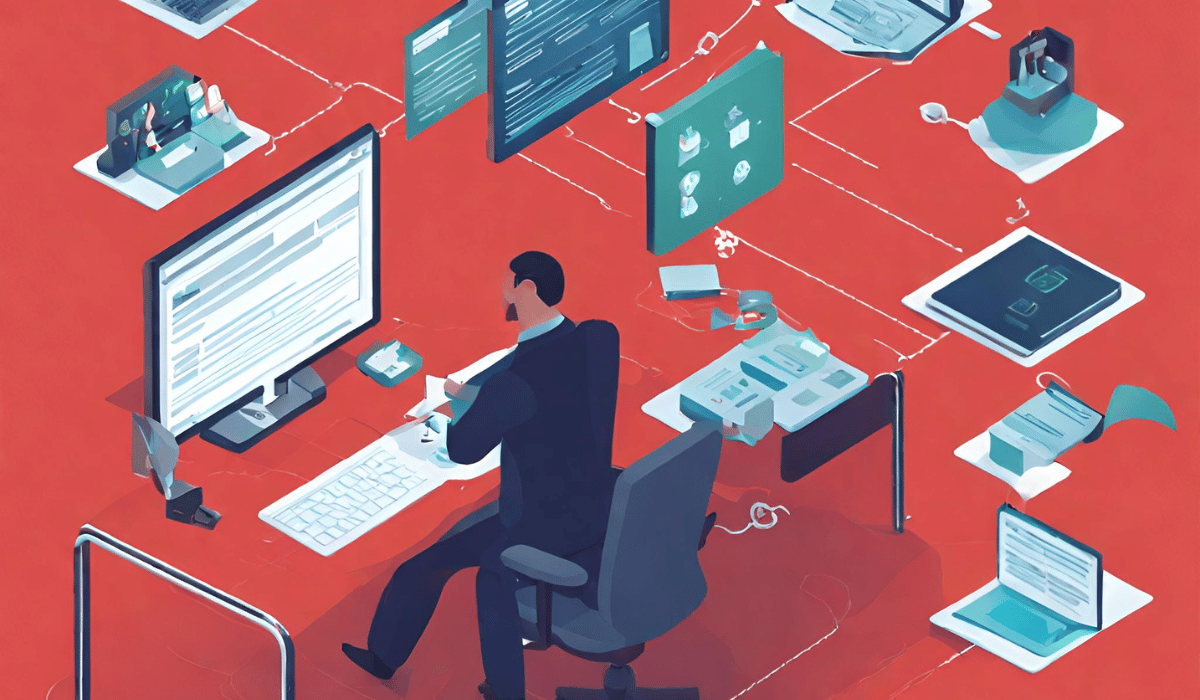Insider Threats are the greatest threat to data theft in most secure organizations.
In today’s digital landscape, data security is paramount for organizations, particularly those with top-notch security measures. Despite robust defenses, organizations must address a looming threat to protect their sensitive data effectively. We will explore the greatest threat to data theft in secure organizations, exploring its complexities, impact, and strategies for safeguarding against it.
The Growing Concern of Data Theft
Data theft has emerged as a significant concern in the modern business world. Even organizations that pride themselves on their security prowess are not immune to this threat. So, what is the greatest threat secure organizations face concerning data theft? The answer is Insider threats. For Better understanding read on !!
Understanding Insider Threats

Insider threats are among the most prominent and challenging threats to data security within secure organizations. Insider threats refer to the risk posed by individuals who have authorized access to the organization’s data and systems but may misuse that access for malicious purposes. This includes employees, contractors, and business partners who, knowingly or unknowingly, compromise the organization’s data integrity and confidentiality.
Characteristics of Insider Threats

- Privileged Access: Insider threats often have elevated access levels, allowing them to access critical data and systems.
- Legitimate Credentials: These threats operate using legitimate login credentials, making it challenging to differentiate their actions from regular activities.
- Knowledge of Security Measures: Insiders are familiar with the organization’s security protocols and weaknesses, enabling them to exploit vulnerabilities more effectively.
- Malicious Insiders: Disgruntled employees seeking revenge or financial gain may intentionally compromise data security.
- Unintentional Errors: Well-meaning employees may inadvertently expose sensitive data through actions like accidental data leaks or falling victim to social engineering attacks.
- Third-Party Contractors: External contractors with access to organizational data may inadvertently or deliberately misuse the data.
- Knowledge of Security Measures: Insiders are familiar with the organization’s security protocols and weaknesses, enabling them to exploit vulnerabilities more effectively.
Examples of Insider Threats
To understand the gravity of this threat, consider some common scenarios where insider threats can manifest:
- Malicious Insiders: Disgruntled employees seeking revenge or financial gain may intentionally compromise data security.
- Unintentional Errors: Well-meaning employees may inadvertently expose sensitive data through actions like accidental data leaks or falling victim to social engineering attacks.
- Third-Party Contractors: External contractors with access to organizational data may inadvertently or deliberately misuse the data.
- Negligence: Employees failing to follow security protocols or carelessly handling sensitive data can pose significant risks.
Preventive Measures and Mitigation Strategies
Mitigating insider threats requires a comprehensive approach involving technological and human-centered solutions.
- Role-Based Access Control (RBAC)
- Implement role-based access control to limit access to data based on an individual’s job responsibilities.
- Regularly review access permissions and remove unnecessary privileges.
- Monitoring and Behavior Analysis
- Implement robust monitoring systems to detect unusual activities or deviations from typical behavior.
- Utilize user behavior analytics to identify anomalies in user actions and data access.
- Employee Education and Awareness
- Conduct regular training sessions to educate employees about the risks of insider threats and the importance of data security.
- Foster a culture of security awareness and encourage employees to report suspicious activities.
- Data Encryption and Tokenization
- Encrypt sensitive data to protect it even if it falls into the wrong hands.
- Tokenization can replace sensitive data with non-sensitive tokens, reducing the risk of data exposure.
- Segmentation and Network Security
- Segment networks to isolate critical data and limit lateral movement in case of a breach.
- Strengthen network security with firewalls, intrusion detection systems, and other advanced technologies.
Key Takeaways
- Insider threats involve individuals with authorized access to sensitive data who may misuse it for malicious purposes.
- Characteristics of insider threats include privileged access, legitimate credentials, and knowledge of security measures.
- Insider threats can be intentional or unintentional, making them challenging to detect and prevent.
- Mitigation strategies include role-based access control, monitoring and behavior analysis, employee education, data encryption, and network security.
- Creating a strong security culture and fostering employee awareness are essential in combating insider threats.
FAQs
What is the primary risk posed by insider threats?

Insider threats have authorized access to sensitive data and systems, making detecting and preventing illicit activities challenging.
Can insider threats be unintentional?
Insider threats can be unintentional, where employees inadvertently compromise data security through errors or negligence.
How can organizations prevent insider threats?
Organizations can mitigate insider threats through role-based access control, monitoring and behavior analysis, employee education, data encryption, and network security measures.
What are some common examples of insider threats?
Examples include malicious insiders seeking revenge or financial gain, unintentional errors by well-meaning employees, third-party contractors with access to data, and negligence in handling sensitive information.
Why are insider threats challenging to detect?
Insider threats use legitimate credentials and known security measures, making it harder to differentiate their actions from regular activities.
Conclusion
In conclusion, the greatest threat to data theft in secure organizations stems from insider threats, which can arise within an organization. With authorized access to sensitive data, these individuals pose significant challenges in detection and prevention. However, organizations can effectively combat this threat by adopting a multi-layered approach that combines technological measures with employee education and awareness.
